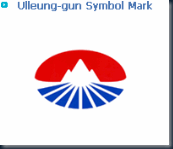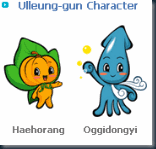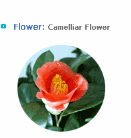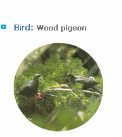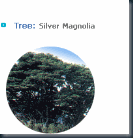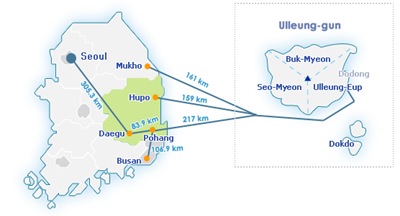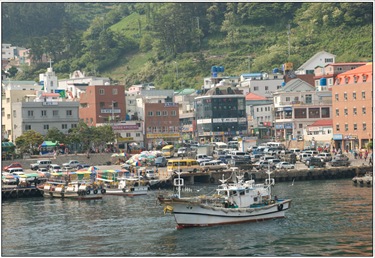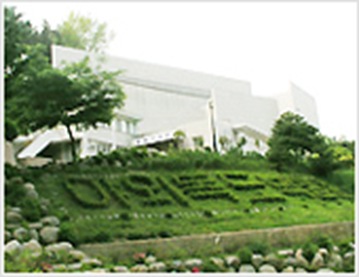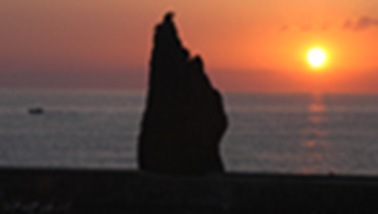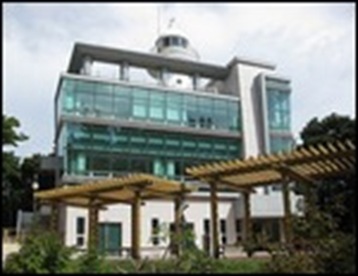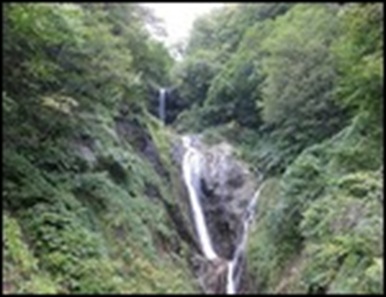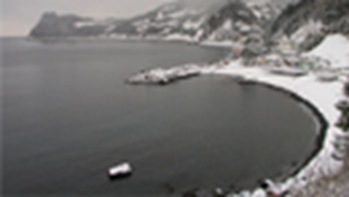 I was surfing on the net looking for some more material on Ulleungdo when I saw this article on Korea Net. The opening words were so true, “Ulleungdo, or Ulleung Island, may not be as famous or popular as Korea's most well-known resort island of Jeju or Jejudo. Yet when it comes to beauty and charm, Ulleungdo can still compete. Ulleungdo, located about 120 kilometers east of the Korean peninsula, is a pentagon-shaped rocky island formed by ancient volcanic eruptions. Because of its seismic formation, there are high and steep cliffs all over the island. It still makes many wonder how nature could create such a beautiful place like Ulleungdo.”
I was surfing on the net looking for some more material on Ulleungdo when I saw this article on Korea Net. The opening words were so true, “Ulleungdo, or Ulleung Island, may not be as famous or popular as Korea's most well-known resort island of Jeju or Jejudo. Yet when it comes to beauty and charm, Ulleungdo can still compete. Ulleungdo, located about 120 kilometers east of the Korean peninsula, is a pentagon-shaped rocky island formed by ancient volcanic eruptions. Because of its seismic formation, there are high and steep cliffs all over the island. It still makes many wonder how nature could create such a beautiful place like Ulleungdo.”
So it looks like we didn’t make a mistake after all in coming to this island. And now that I’m here I don’t want to leave, perhaps being an islander myself back in my hometown, is the reason why I am so drawn towards Jejudo and Ullengdo. That is also why I couldn’t finish writing about it in one go. Who knows it might even demand a further continuation after today because there are still so many more things to write about Ulleungdo, so please bear with me a little longer.
For you sports enthusiasts, did you know that there are many sports activities to help you pass away your time while you are here in Ulleungdo? Take your pick, there’s climbing, hiking, bicycle tracking,artificial rock wall & rock wall climbing, camping and fishing.
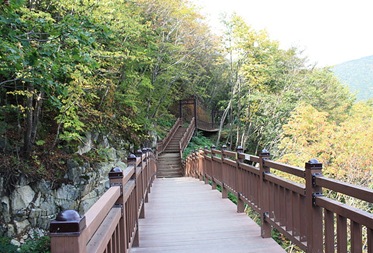 Climbing in Ulleungdo is uniquely attractive as the path goes through the primeval forest and where there are proper steps with handrails to hold on to as you slowly make your way up. Climbing is different from hiking in that it is less vigorous than hiking, more of a slow ‘hike’ you might say, a gradual thing but where you might have to climb a bit to reach higher ground or even mountain tops. Sometimes it might just mean walking along the beach to go to a village or climbing up steps to go up a lighthouse/observatory for example. This is an activity where the elderly can join in.
Climbing in Ulleungdo is uniquely attractive as the path goes through the primeval forest and where there are proper steps with handrails to hold on to as you slowly make your way up. Climbing is different from hiking in that it is less vigorous than hiking, more of a slow ‘hike’ you might say, a gradual thing but where you might have to climb a bit to reach higher ground or even mountain tops. Sometimes it might just mean walking along the beach to go to a village or climbing up steps to go up a lighthouse/observatory for example. This is an activity where the elderly can join in.

I suppose hikers can get to the destinations much faster but for me, getting there sooner or later, we still arrive at the same destination. At the end of a climb/hike , you’ll feel refreshed when you stand at the peak of the mountain, breathing in the cool, fresh mountain air and enjoying the beautiful scenery up there. The following courses are recommended for climbing/hiking. Whichever way you do it, the fast way or the slow way, the reward at the end of the journey is well worth it.
There are three different courses for climbing up the Seonginbong Peak, it may take a long time to get up there but the view up there is just fantastic.
The Daewonsa Course (Time Required: 4 hours and 40 minutes)
Daewonsa → Palgakjeong → Seonginbong Peak → Shinryeongsu → Nari Basin
KBS Air Station Course (Time Required: 4 hours and 20 minutes) KBS Ulleung air Station → Palgakjeong → Seonginbong Peak → Shinryeongsu →Nari Basin
Anpyeongjeon Course(Time Required : 4 hours)
Sadong(Anpyeongjeon) → Seonginbong Peak → Shinryeongsu → Nari Basin
From the Nari Basin you can take the local bus back to Dodong. OR
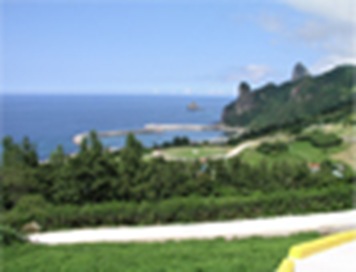 camp out for the night her. The camp site here is available free of charge. Subsidiary facilities are toilets, showers and shelters. In summer, camping out is allowed in the seaside area. Camping sites in Jeodong Naesujeon, Namyang, Chusan and Jukam seaside are also quite popular.
camp out for the night her. The camp site here is available free of charge. Subsidiary facilities are toilets, showers and shelters. In summer, camping out is allowed in the seaside area. Camping sites in Jeodong Naesujeon, Namyang, Chusan and Jukam seaside are also quite popular.
And now back to the other climbing/hiking courses.
Mireukbong(Time Required : 3 hours) Mireukbong Peak, 900.8m above sea level, is a proper course for slow hiking.
The top of the peak commands a view so spectacular that it calls for some photography here. The course takes you from Taeha to Seodalmaeul, then to Gindeungdae and finally to the top of the Mireukbong Peak.
The Haengnam Course (One hour from Dodong harbor to Haengnam)
It is a course along the left seashore of Dodong Harbor. You can enjoy some beautiful seaside scenery, especially under the bridge connecting a natural cave and a valley. In fall, it’s a gorgeous sight looking at all those yellow bog rhubarbs.
The Naesujeon Sunrise Observatory Course (one hour and 30 minutes from Jeodong Naesujeon Sunrise Observatory to Seokpo Village.)
The only unpaved section (4.4km) in the Ulleungdo circuit road, which leads to Bukmyeon Seokpo Village along the county Road No.1, passing the Jeodong Naesujeon Yaksuteo(Mineral Spring). Midway, you will meet with small valleys and sometimes the wide sea as well, including Jukdo Island and Gwaneumdo Island. This course offers some beautiful views of the mountain and the surrounding area.
Jeongmaehwagok, which is halfway between the Naesujeon Sunrise Observatory and Seokpo Village serves as a good rest area. You can enjoy the beautiful seashore scenes of Gwaneumdo Island and the circuit road in front of Seokpo Village. Pampass grass is especially beautiful in the fall.
The Taeha Lighthouse(Daepunggam) Course ( one hour and 10 minutes from the upward hill near Taeha Harbor, Hwangtogul.)
It's a course where you can enjoy the beautiful sea and the pine tree covered mountains. The wind from the sea carries the fragrance of the pine trees as you walk along the path until you meet the Taeha Lighthouse. From the top of the lighthouse you will be able to see Bukmyeon's superb seashore view which is one of the 10 most beautiful scenery as recommended by the ‘San' Monthly magazine.
The bike tracking course in Ulleung measures 70km in all, with a 2 lane paved seaside road(44.2km) and a single track course(4.4km) in the primeval forest between Naesujeon and Seokpo. The seaside road is very challenging because the levels are varied, from sea level to the mid-slope of the mountain, however, the beautiful scenery you come across while biking will relieve the suffering in the legs. For this activity you must have plenty of stamina, so you can count me out for this one..
Recommended Courses
1. Dodong – Naesujeon Hill 6km
2. Naesujeon – Seokpo Mountain Road through the primeval forest 4.4km
3. Nari Basin – Shinryeongsu 2km
4. Rising and falling seaside course, Cheonbu – Dodong
Fishing anyone? There are lots of places to go for it. Below are the sites for going fishing from the homepage of Ulleungdo, how to go, where to go and the types of fish found in each area.
Fishing site in Dodong right and left seaside Fishes: Bangeo(Busiri), Benge Snapper, Parrot fish, Horse mackerel, Mackerel, Mangsangeo
- Location: 0.5km from Dodong
- Access: On foot
- Time required: Less than 10 minutes
Jeodong Chotdaebawi fishing site Fishes: Bangeo(Busiri), Benge Snapper, Parrot fish, Ureok
- Location:3km from Dodong
- Access: By car(Local buses are running every 30 minutes)
- Time required: 10 minutes
Tonggumi(Geobukbawi, Gajaegul) fishing site Fishes: Bangeo(Busiri), Benge Snapper, Red sea bream, Black sea bream
- Location: 8km from Dodong
- Access: By car(Local buses are running every hour)
- Time required: 20 minutes
Namyang(Sajabawi, Sataegumi) fishing site Fishes: Bangeo(Busiri), Benge Snapper, Black porgy, Parrot fish, Red sea bream
- Location: 10km from Dodong
- Access: By car(Local buses are running every hour)
- Time required:30 minutes
Taeha(Mulyangjang, Ilbanchu) fishing site Fishes:Bangeo(Busiri), Benge Snapper, Red sea bream, Black porgy
- Location: 18km from Dodong
- Access: By car(Local buses are running), Boat can be available.
- Time required: 40 minutes by boat
One last sporting activity for the very daring, artificial rock wall & rock wall climbing.
Climbing Artificial Rock Wall There is a global standard size artificial rock wall in the Dodong Yaksu Park. The first Ulleungdo and Dokdo Sarang, Artificial Rock Climbing Competition was held in August, 2000.
As for rock wall climbing, Ulleungdo is blessed by nature as most of the area has very steep cliffs. Frequently challenged climbing points are the sea cliffs in Dodong, Jeodong Yongbawi, Janggunbawi, Samseonam Rocks and the Songgotbong Peak.
Now let’s continue with the sightseeing we still have yet to do. We’ve already covered Ulleungeup in my previous post so that leaves us now with Seomyeon and Bukmyeon.
So shall we start with the tourist attractions in Seomyeon?
 Namyang Stream water that flows in the valley, situated in the middle of the Bipa Mountain was previously known as ‘Golgye’ as there were more valleys and streams than other villages. Presently, it is called ‘Namyang’ which means the south and is also the warmest place in Ulleungdo. It is where the snow melts the earliest in Ulleungdo.
Namyang Stream water that flows in the valley, situated in the middle of the Bipa Mountain was previously known as ‘Golgye’ as there were more valleys and streams than other villages. Presently, it is called ‘Namyang’ which means the south and is also the warmest place in Ulleungdo. It is where the snow melts the earliest in Ulleungdo.
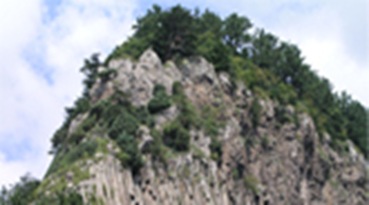 Mt. Bipa (Guksusan) is located at the back of Namyangri village. There was a legend why it was called ‘Mt. Bipa(Mandolin),’ because King Uhae of Usanguk brought 12 maids and let them play the mandolin everyday to mourn the death of his queen, Poongminyeo, who died and left him with a daughter.
Mt. Bipa (Guksusan) is located at the back of Namyangri village. There was a legend why it was called ‘Mt. Bipa(Mandolin),’ because King Uhae of Usanguk brought 12 maids and let them play the mandolin everyday to mourn the death of his queen, Poongminyeo, who died and left him with a daughter.
From the Naesujeon Sunrise Observatory, Jukdo Island, Gwaneumdo Island and Seommok can be seen on the horizon. It’s a refreshing sight when you see the pure and clean sea that separates them From here you can enjoy tracking to the Bukmyeong Seokpo Village in the next county.
 Sajabawi The King of Silla dispatched Yisabu, the sovereign of Gangreung, to subjugate Usanguk. The Silla warship had a wooden lion at the bow of the boat. King Uhae of Usanguk surrendered, taking off a war helmet when he was threatened that the lion would open fire from its mouth and those lions would exterminate all the people in Usanguk.
Sajabawi The King of Silla dispatched Yisabu, the sovereign of Gangreung, to subjugate Usanguk. The Silla warship had a wooden lion at the bow of the boat. King Uhae of Usanguk surrendered, taking off a war helmet when he was threatened that the lion would open fire from its mouth and those lions would exterminate all the people in Usanguk.
Though Usanguk perished, the legend is still heard that the wooden lion became the Sajabawi(lion rock) and the war helmet taken off by King Uhae became the present Tugubong (helmet)
The Namseo Sunset Observatory You can feel the magnificence when you see the wide horizon as well as steep cliffs and fantastic rocks and stones along the Sataegumi seaside. This observatory was built specially to view the sunset, which is very beautiful as seen from this spot. The penis rock is standing eminently in front of the observatory and in the opposite hill there’s a Saeksibawi (Lady Rock) that’s bashfully turning back from the penis rock. Please forgive the obscenity but that’s what the rock is known as. There‘s a legend that those couples who don’t have children, can have a child by making a wish before the penis rock and the couples can even get more intimate by confessing love before the rock.
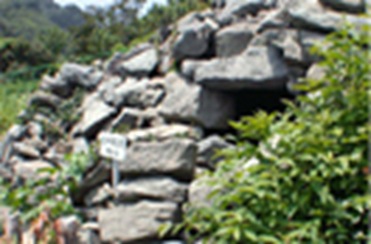 Namseori Tumulus, designated as a Gyeongsangbukdo monument is located 1.5km away from the Namyang bus station. As there’s a good-taste spring water, known as the Chanmulnaegi nearby, it is a good place to stop and rest. This area is a site that has the most tumulus. Tombs are made up of the flat stylobate on which the deceased body is laid and the mound is covered with stones.
Namseori Tumulus, designated as a Gyeongsangbukdo monument is located 1.5km away from the Namyang bus station. As there’s a good-taste spring water, known as the Chanmulnaegi nearby, it is a good place to stop and rest. This area is a site that has the most tumulus. Tombs are made up of the flat stylobate on which the deceased body is laid and the mound is covered with stones.
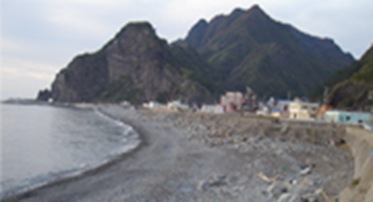 The Namyang Mongdol Seaside, less than half an hour’s drive from Dodong is unique to Ulleungdo. The summer scenery such as the moonlight shining and reflecting on the black pebbles, with the white waves beating on the seashore is beautiful enough to attract any visitor
The Namyang Mongdol Seaside, less than half an hour’s drive from Dodong is unique to Ulleungdo. The summer scenery such as the moonlight shining and reflecting on the black pebbles, with the white waves beating on the seashore is beautiful enough to attract any visitor
Hakpo is smaller than Taeha but it has lots of yellow earth. Since ancient times, it has been called Small Hwangtogumi. The village was called Hakpo (Crane) as there was a rock that looked like a crane.
During the reign of King Taejong of Joseon, Kim In Woo arrived in Ulleungdo with two warships to take Ulleungdo residents back to the mainland. When he was sleeping after completing the mission, he dreamt that the god in the sea ordered him to leave a man and a woman on the island. Kim In Woo returned leaving the two people on the island.
After several years, he came back to Ulleungdo on a mission where he found the two people had become skeletons while hugging each other. He built a shrine there in their memory known as the Seongha Shrine.
Taehari Gwangseomyeong Gakseokmun (a 5 minutes’ walk from the Seongha Shrine) is an engraved stone without trimmings. Son Ju Yeong who served as Owijang built it in April 1890 in remembrance of those people who contributed to the exploitation period.
Now let’s go over to Bukmyeon and see what the tourist attractions there are like. In Bukmyeon there are some very odd shaped rocks and huge volcanic rock cliffs created by Ulleungdo’s volcanic past. At various intervals along the coast of Ulleungdo you will find small fishing villages. Further inland you might be able to see some agricultural villages.
Jukam village, located in the valley surrounding the sea, was called Daebau((bamboo) as there were many bamboo trees but it was named Jukam (bamboo rock), converted to Chinese letters. You can swim in the Jukam Mondol Seaside in front of the village and at the same time experience life in a quiet fishing village.
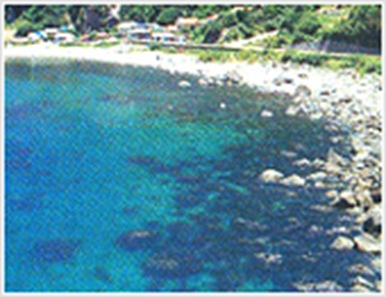 There are no sand beaches on Ulleungdo Island. Because the coastline is made up of steep rock walls, all beaches are formed by small pebbles. But the water is very clean and the scenery, strikingly beautiful. In particular, Jugam Mongdol Beach is considered extremely beautiful because of such attractions as the Samseonam Rocks (Three Fairy Rocks) and Gwaneumdo Island are nearby.
There are no sand beaches on Ulleungdo Island. Because the coastline is made up of steep rock walls, all beaches are formed by small pebbles. But the water is very clean and the scenery, strikingly beautiful. In particular, Jugam Mongdol Beach is considered extremely beautiful because of such attractions as the Samseonam Rocks (Three Fairy Rocks) and Gwaneumdo Island are nearby.
On Gwaneumdo Island are various self generating plants such as the camellia, the pampass grass, the bujigaengyi and the mugwort. There are two caves at the bottom of the island. Gwaneumssanggul(twin caves) is 14m high and pirates used to hide their ship in this cave and plunder passing boats. A man named Wolseong Kim, one of the first settlers to come from Gyeongju, came to this island to escape from the typhoon. He made a fire as he was cold and hungry. So many crows flew in that he managed to satisfy his hunger. This island is also called island of Ggaksae(Crow) due to the numerous crows around here. A legend says that water falling down from the ceiling of the twin caves makes you live long.
The Samseonam Rocks looks like there are two rocks from a distance but actually there are 3 rocks. According to a legend, 3 angels, lost in the beautiful scenery here, couldn’t go back to heaven in time and they were turned into rocks. It is one of the 3 beautiful spots in Ulleungdo.
A map in the Haedongjido (atlas) made in the18th century, will show that there were 20 stone tombs and a temple site which had a pagoda in it in Hyeonpo.
According to the Donggukyeojiseungram, there used to be 7 sites of colonies, stone figures and stone pagodas and it is presumed that this place was a capital city of ancient Usanguk as there are many historical remains such as Seongji, Naseonjang and Seondol.
Present day Hyeonpo may be just a small fishing village but surprisingly there is a pearl museum here. This museum is filled with some impressive works of art made from pearls. The museum also has a number of large clams on display as well.
The Haedongjido map also shows rocks that can still be seen on and around Ulleungdo today. One is labeled as Ugak-am, which means “Cow Horns Rock.” Today that rock is called “Samseon-am.” Next to Ugak-am is Ssangpo-am, which means “Double Ramie Cloth Rock.” Today it is called “Gawui Bawui,” which means ”Scissors Rock.” Next to Scissors Rock is Seonyudae, which means “a high place where nymphs play.” Today it is called Ddan Bawui. Notice that the rocks that Koreans associate with nymphs today are different from the rocks that were associated with them in the 1700s. Then there is the Gong-am, which means “Hole Rock.” Today, Koreans still call the rock “Hole Rock,” but they also call it “Elephant Rock” or The Gongam Koggiri Bawi because it looks like an elephant with its trunk in the water. The surface of the rock looks like firewood being stacked up and boats can pass through the 10 meters side hole in the rock.
 The Hyeonpori Tumulus is Gyeongsangbukdo Natural Monument No.73. There are about 10 tumuluses in a slope. It is a stone tomb with a rectangular room for the deceased body on the stylobate and a stone cover is made on it. This type of tomb is assumed to be that of the Samguksidae (Era of 3 Countries).
The Hyeonpori Tumulus is Gyeongsangbukdo Natural Monument No.73. There are about 10 tumuluses in a slope. It is a stone tomb with a rectangular room for the deceased body on the stylobate and a stone cover is made on it. This type of tomb is assumed to be that of the Samguksidae (Era of 3 Countries).
The Songgotbong Peak is 430 meter high.
It was named Songgotbong (auger)as a mountain peak in the Seonginbong Peak resembles an auger and a neighboring village was named Chusan after the Chinese letter ‘Chu’ meaning an auger and ‘San’ meaning a mountain. There is a deep hole, unknown how deep it is, at the top of Songgotbong.
Chusan village, located to the north west of Naridong, somewhere between Bukmyeon Hyeonpori and Cheonburi, is called Chusan as there is a mountain resembling a gimlet. You can feel the typical mood of an Ulleungdo agricultural village whilst enjoying a superb view of the Gongam (Elephant Rock) and the Songgotbong Peak..
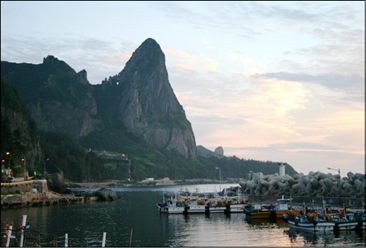 Cheonbu was called the ‘Old Wharf' or ‘Japanese Wharf'.
Cheonbu was called the ‘Old Wharf' or ‘Japanese Wharf'.
This village was called ‘Japanese Wharf' as at the time of the Joseon Dynasty, Japanese boats were built here and they stole precious timbers and transferred them to Japan. It was also called ‘Old Wharf' because the wharf has been here from ancient times.
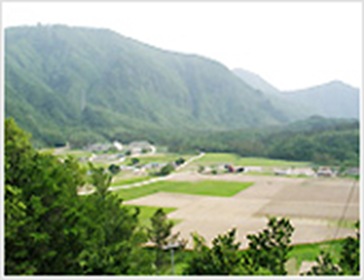 The Nari basin is the only place on the island with significant flat land which is suitable for dry field farming. When the first settlers arrived on Ulleung-do from Korea in the 1880s, the Nari basin was one of the first regions they settled in. It is also the only place on the island where traditional houses are preserved. There are two tumak houses (thatched-roof houses) and one neowa (shingle-roof) house standing in Nari. There’s even a church near these houses. Further south in the now-uninhabited part of this basin, are two additional tumak houses .
The Nari basin is the only place on the island with significant flat land which is suitable for dry field farming. When the first settlers arrived on Ulleung-do from Korea in the 1880s, the Nari basin was one of the first regions they settled in. It is also the only place on the island where traditional houses are preserved. There are two tumak houses (thatched-roof houses) and one neowa (shingle-roof) house standing in Nari. There’s even a church near these houses. Further south in the now-uninhabited part of this basin, are two additional tumak houses .
The northern part of Seonginbong Peak was a site created by caldera. On the site are the Albong Peak (538km) and 2 villages which are divided by the molten lava, Nari village being in the north east, Albong Peak village being in the south west where it’s uninhabited now.
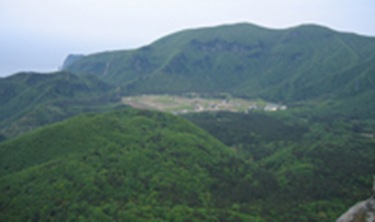 The Nari Valley was so-called because people who had lived there from ancient times survived hunger, by eating the roots of the Seommal Nari. At the time of exploitation, it was the first settled colony. Tour sites nearby include Tumakjip, Neowajip, Flower beds of Ulleungdo, Seombaekrihyang Colony, Yongchulso, Shinryeongsu, and the Camp site.
The Nari Valley was so-called because people who had lived there from ancient times survived hunger, by eating the roots of the Seommal Nari. At the time of exploitation, it was the first settled colony. Tour sites nearby include Tumakjip, Neowajip, Flower beds of Ulleungdo, Seombaekrihyang Colony, Yongchulso, Shinryeongsu, and the Camp site.
Seombaekrihyang Colony (a Natural Monument) is located 20 minutes away from Nari towards Shinryeongsu.
It resembles Baekrihyang but the leaves and flowers are bigger and it is self generating only in Ulleungdo, so it’s called Seombaekrihyang. Purple or red violet flowers usually bloom in June and July and its fragrance spreads as far as to 100 ris. Old time fishermen are said to have found their directions by this fragrance.
Ulleunggukhwa (Flower of Ulleungdo) is a kind of wild chrysanthemum with a glossy trunk and relatively thick leaves. Tongue shaped white flowers bloom in September and October every year, which is self generating in the Seombaekrihyang Colony.
Tumakjip is built by stacking up hemlock spruce and beechtree and the crevice is filled up with soil which self controls temperature and humidity. It is cool in summer and warm in winter in this house. One shingle roofed house and 4 tumakjips in Nari Basin are protected as cultural assets
A shingle roofed Ulleungdo traditional house with the deep earth scent and the aroma of trees, was a traditional type of house for the first settlers which is called ‘ Gwiteuljip ' on the mainland.
The Seonginbong Peak is 984 meters above sea level and at the peak is a rare-tree-colony comprising of trees like the linden tree, the beech tree and the Goroshoi tree which is designated a Natural monument.

The Seonginbong Peak (sacred man) Peak is so-called as the mountain looks very sacred. The mountain is covered with fog for an average of 300 days annually, giving it an air of mystery. Consider yourself very lucky indeed if you manage to climb up here and find that it’s all bright and clear. There’s a footprint, known to be the General’s Footprint, on the rock that looks like an altar. This foot print is the left one and the right one is said to be somewhere on the mainland.
Seokpo, also called ‘Jeongdeulggae' or ‘Jeongdeulpo', was called ‘Jeongdeulpo' as the first settles felt so sorry(Jeong) when they had to leave the wharf(po) for the mainland. Later, this village was renamed Seokpo as there was a lot of stone.
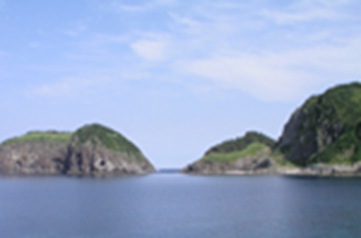 A mountain was extending towards the sea to the east of Seokpo and there’s an island called Gwaneumdo Island. Ships were plying between the two islands and the waterway looked like a neck(mok), so it was named ‘Seommok’. It’s also called ‘Seonchangpo’ meaning a wharf. It was a major waterway
A mountain was extending towards the sea to the east of Seokpo and there’s an island called Gwaneumdo Island. Ships were plying between the two islands and the waterway looked like a neck(mok), so it was named ‘Seommok’. It’s also called ‘Seonchangpo’ meaning a wharf. It was a major waterway
Looks like I was right, I’m afraid I have to continue telling you about Ulleungdo in my next post. So drop by if you want to know more……


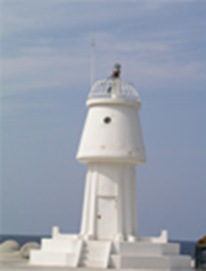

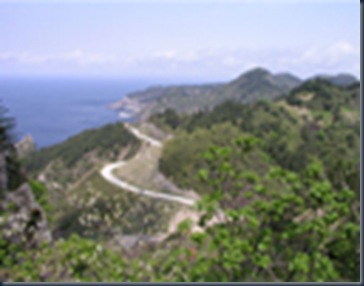

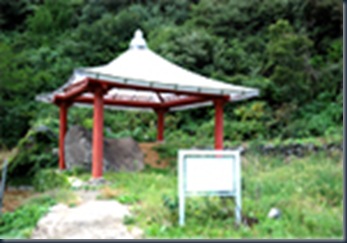


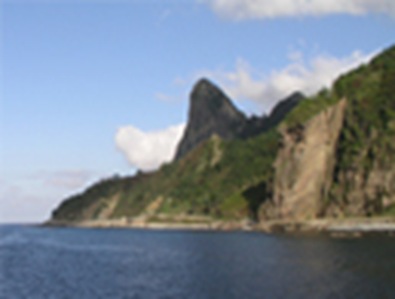
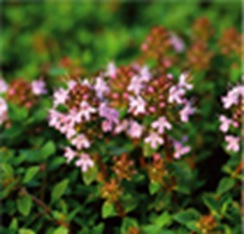
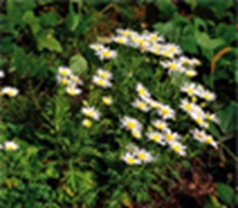

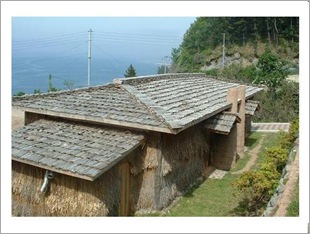
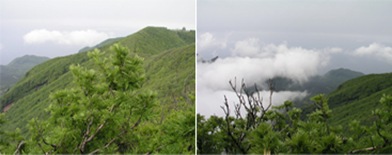
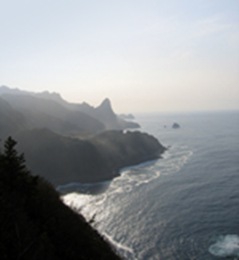
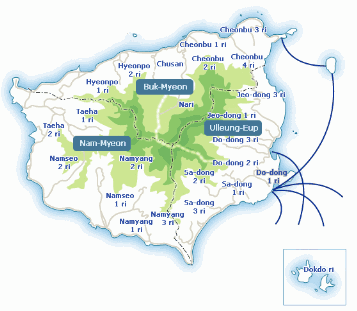
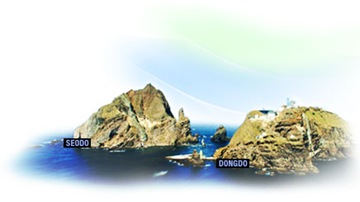

 Japanese Ministry of Finance Notice no. 654 specifying Dokdo as foreign soil
Japanese Ministry of Finance Notice no. 654 specifying Dokdo as foreign soil 